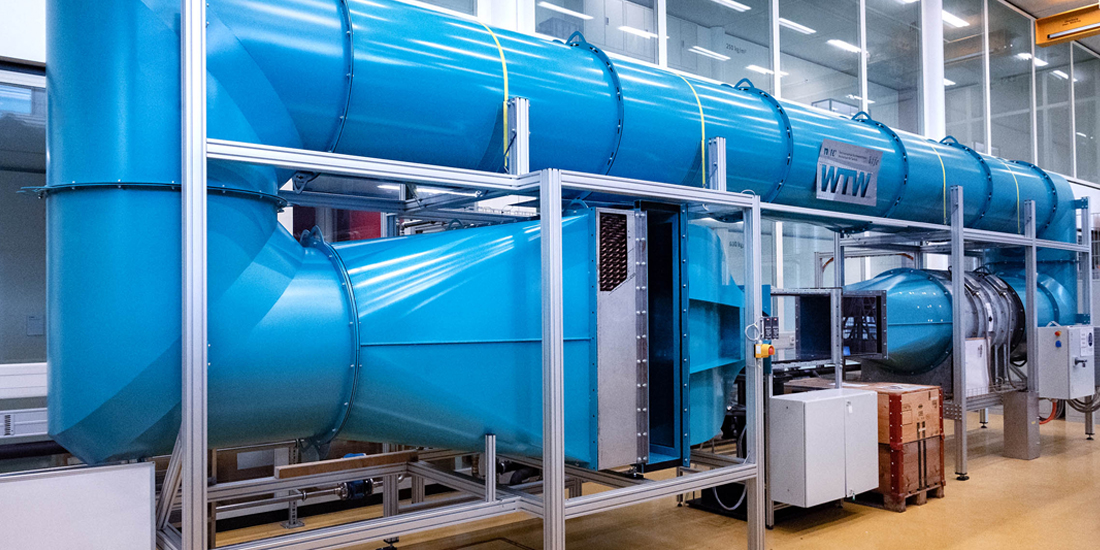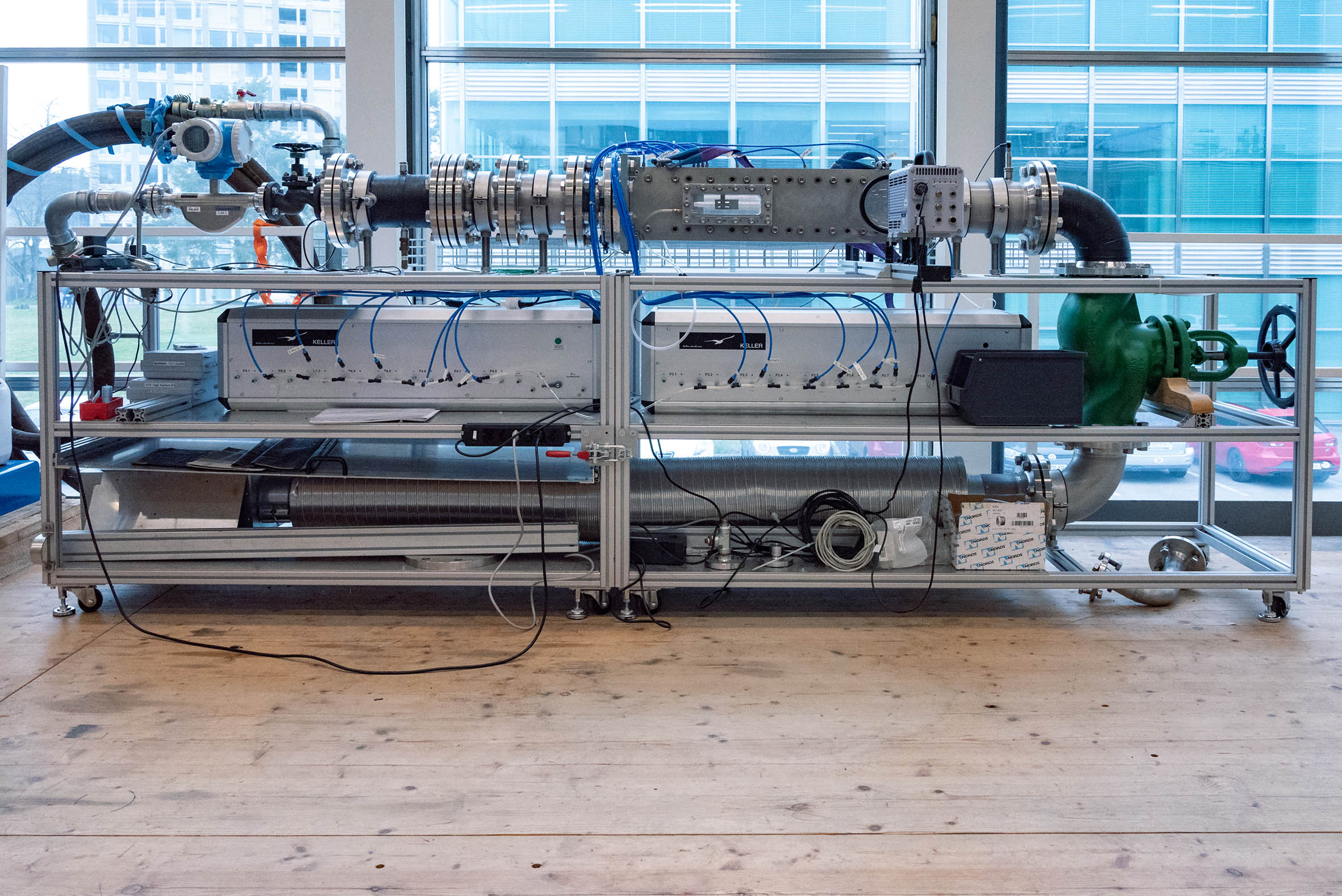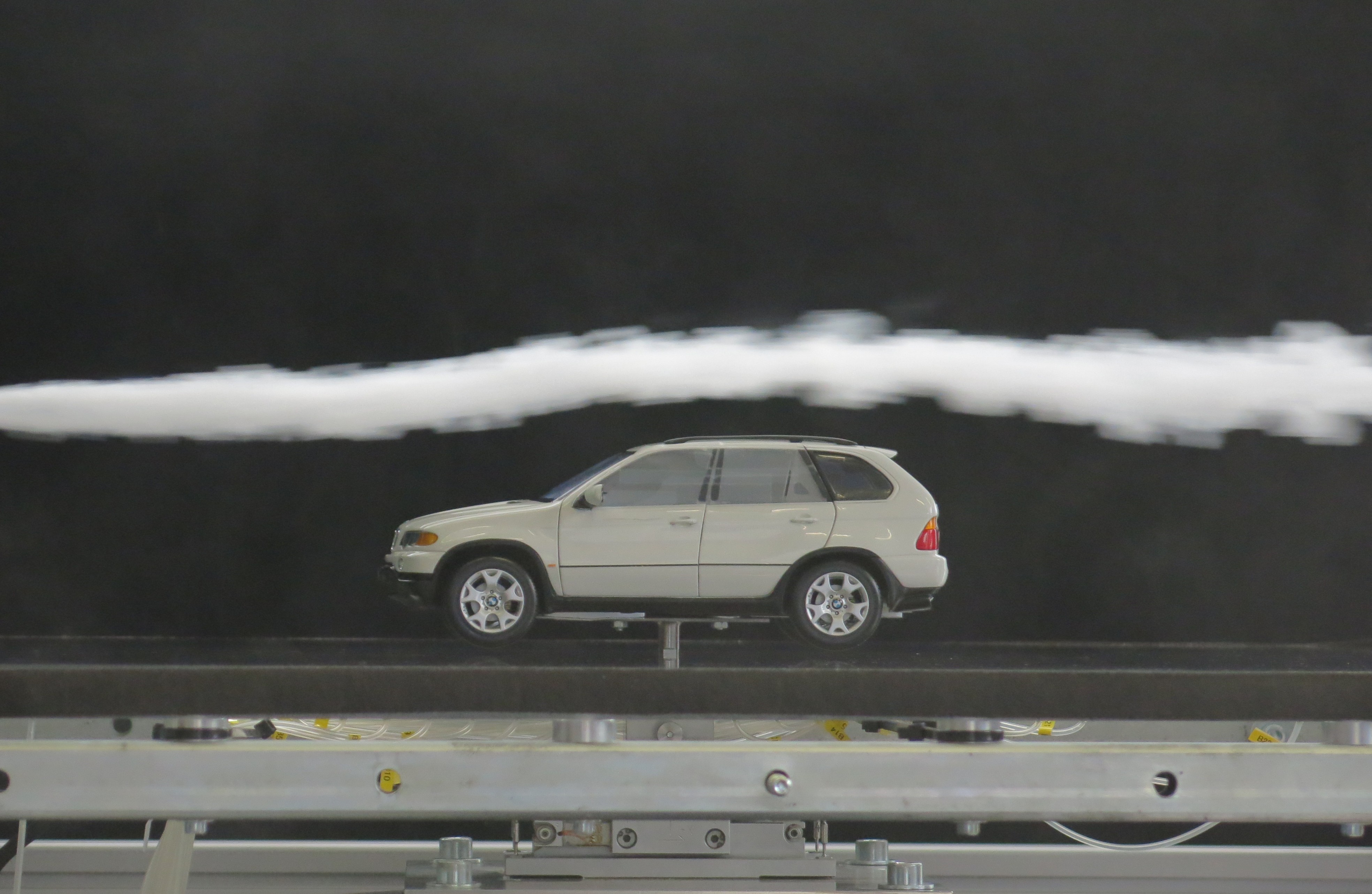Wind Tunnels FHNW
The three wind tunnels at the FHNW offer you various options for investigating the aerodynamic properties of different measurement objects and visualising flow phenomena - from vehicles to PV modules.
The FHNW School of Engineering enables you to carry out comprehensive aerodynamic analyses for various types of measurement objects in three wind tunnels. We are equipped with one Göttingen and one Eiffel-type wind tunnel to analyse the aerodynamic properties of measurement objects, as well as a supersonic wind tunnel with Mach numbers up to 1.7 to visualise flow phenomena.
The Göttingen wind tunnel is equipped with a 6-component wind tunnel balance for measuring drag, lateral and lift forces as well as the associated moments (pitch, yaw and roll moments) of the test objects (vehicles, photovoltaic modules, sun blinds, etc.) at different flow velocities. Pressure measurements can also be carried out along the test track. A smoke lance can be used to visualise the flow at low flow velocities (up to around 5 m/s).
The supersonic wind tunnel enables the visualisation of flows in the sub-, trans- and supersonic range using schlieren optics. Schlieren optics can be used to visualise flow phenomena such as oblique shocks on the test body, straight shocks in the nozzle, compression and expansion waves in the 2D Borda-Carnot diffuser, etc. It is also possible to measure the pressure curve along the Laval nozzle, which allows the flow function to be analysed at different pressure ratios.
An open Eiffel wind tunnel is additionally available for laboratory exercises, for the promotion of young scientists and for simpler experiments.
For more information or to discuss a collaboration, please contact Beat Ribi.



